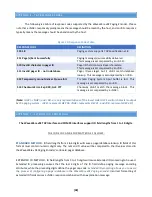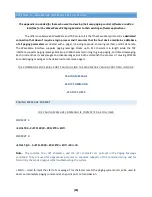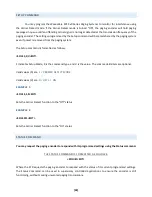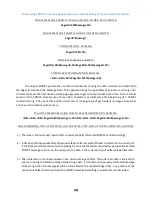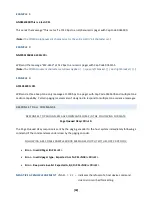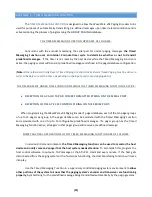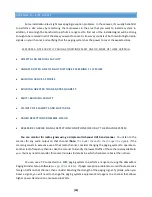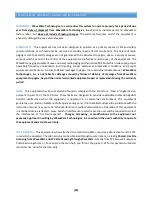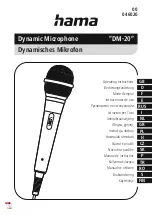
[49]
If the serial input buffer becomes filled with greater than 600 characters, the paging system will
output a hardware or a software flow control response, depending how it is configured. Once the serial input
buffer drops below 450 characters, the paging system will use flow control signals to indicate that it is no
longer busy and that additional data can be delivered to the serial port.
IF A PAGER ID DOESN'T EXIST IN THE PAGER DATABASE, AN ERROR MESSAGE WILL BE SENT BY THE
PAGING ENCODER IN VERBOSE MODE AS FOLLOWS:
Invalid character in pager ID<CR><CR><RS><CR>
There are two possible response modes for COMP2, the Verbose and Non-Verbose modes. The
Verbose response mode has been designed to have human readable responses to message inputs. The Non-
Verbose response mode has no readable responses in it.
APPENDIX J – SCOPE INTERFACE SPECIFICATIONS
A simple definition of the difference between the Scope and TAP Protocols is that the Scope Protocol
is a dedicated connection that doesn’t require a login process and it assumes that the host device (e.g. nurse
call system) maintains a database of all paging parameters associated with a pager, including capcode,
encoding method, and RF data rate. The Scope Interface supports paging messages up to 512 characters in
length.
PAGING MESSAGE COMMAND
THE SCOPE PROTOCOL PAGING MESSAGE COMMAND IS FORMATTED AS FOLLOWS:
AN1234567DMessage<CR>
A
–
Alphanumeric character that represents the type of paging message to be transmitted:
A = Alphanumeric
N = Numeric
.
N
– Alphanumeric character representing the data rate, in bits per second, at which the paging message is to
be transmitted
N = 512 bps
,
F = 1200 bps
,
S = 2400 bps
.
1234567
– 7 digits representing the pager cap code, including leading zeroes as required.
D
– Alphanumeric character representing the function code value to be delivered with the message. Valid
values include:
A
(1),
B
(2),
C
(3), and
D
(4).




